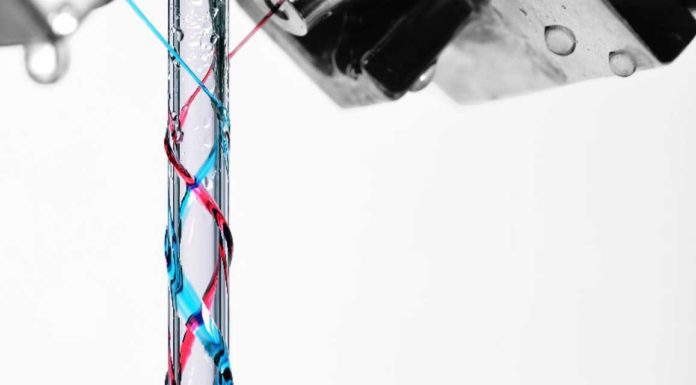The problem with teapots is their annoying habit of dribbling, particularly at low rates of flow. The phenomenon has achieved such notoriety that it has been imaginatively dubbed the teapot effect.
Previous studies have shown that dribbling is the result of flow separation, where the layer of fluid closest to the boundary becomes detached from it. When that happens, the fluid flows smoothly over the lip. However as the flow rate decreases, the boundary layer re-attaches to the surface, causing dribbling.
Now, a team of scientists from the University of Twente, the University of Amsterdam, and the Saxion University of Applied Sciences put a new spin on this annoying ‘teapot effect’ by using it to form liquid helices.
In a new study, scientists shooted jets of water onto vertical cylinders and observed that the liquid can cling to the cylinder, just like it clings to your teapot. Because of the clinging effect, the water swirls around the cylinder to form a helix. By modeling the helix shape and how it is formed, the team was then able to predict the exact clinging behavior for the first time.
As such kind of clinging occurs every time a liquid stream must detach from a solid, the result can not only be used to make teapots that don’t spill as much – it will also be useful for many industrial processes, ranging from pouring to 3D printing.
The study is published in the journal Physical Review Letters.
